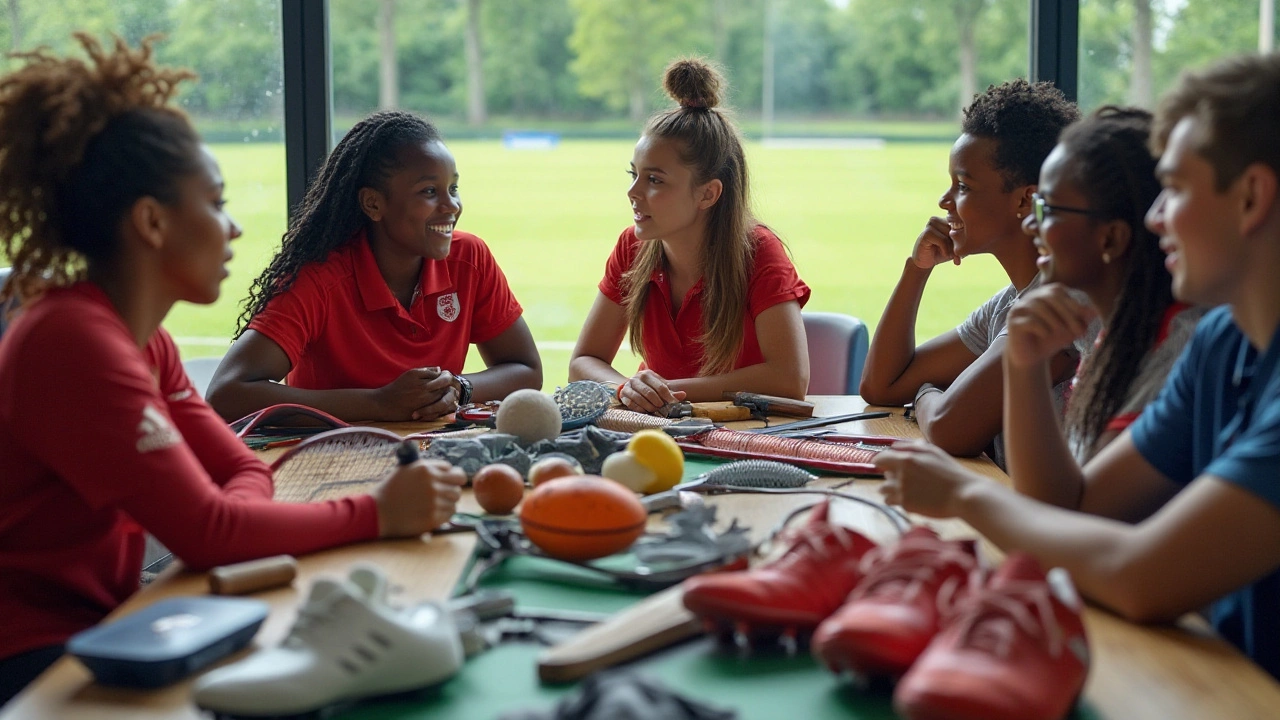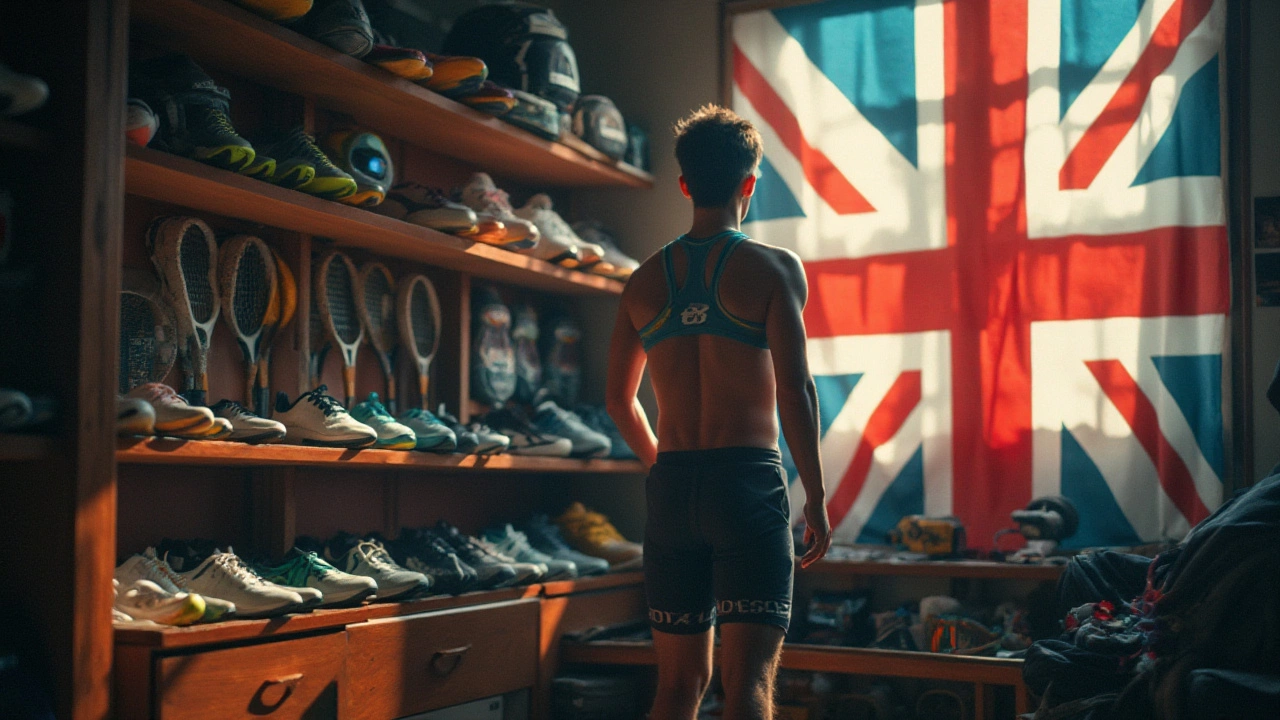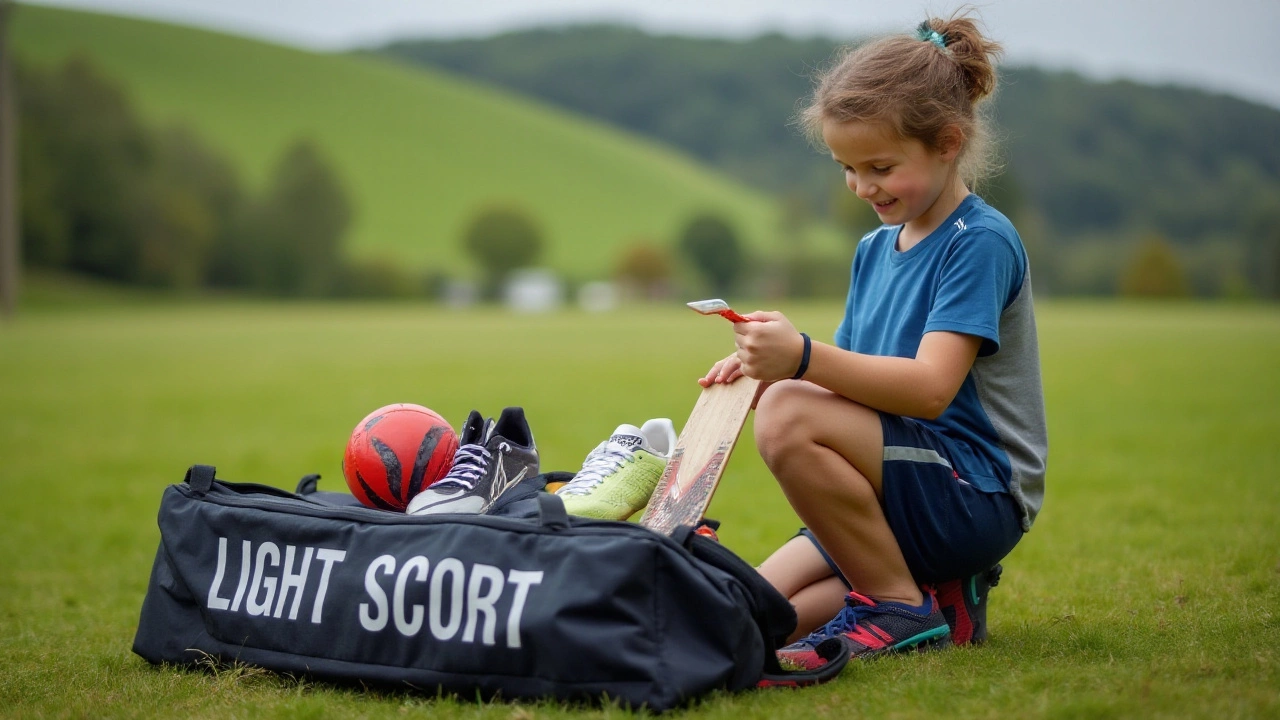Comprehensive Guide to Creating an Effective Sports Equipment List
 Dec, 2 2024
Dec, 2 2024
In the realm of sports, having the right equipment can make the difference between a great experience and an underwhelming one. An equipment list serves as the cornerstone for preparation, ensuring that athletes have all the necessary gear to perform their best. But what exactly goes into crafting this list, and how can it be tailored to meet specific needs?
Whether you're a seasoned athlete or a newcomer to the sports world, understanding the intricacies of an equipment list will undoubtedly enhance your sporting endeavors. Not only does it provide a certain level of preparedness, but it also helps in budgeting and planning for future purchases. This article delves into the nuts and bolts of building an equipment list and explores ways to keep your gear in top shape. By doing so, you'll find your path to improvement much smoother, armed with the right tools to satisfy your athletic pursuits.
- Understanding the Importance of an Equipment List
- Tailoring Your List to Specific Sports
- Essential Items for General Fitness and Training
- Maintaining and Upgrading Your Gear
- Tips for Organizing and Managing Your Equipment List
Understanding the Importance of an Equipment List
An equipment list acts as a blueprint for athletes, guiding them through what they will need before stepping onto the field or into the gym. Such a list is far more than just a simple inventory; it offers reassurance and a level of preparedness that can boost confidence. When athletes know they have all their sports gear ready and in top condition, they can focus entirely on their performance rather than worrying about missing any crucial tools. This approach not only prevents last-minute scrambles but also allows for a smooth training session or competition. Preparing a comprehensive list allows for effective budgeting, as athletes can prioritize purchases based on necessity and planned upgrades.
Moreover, crafting a thoughtful equipment list extends beyond practicality; it's about mental preparation too. Imagine planning for a cycling trip. Having a list ensures that all essentials—from a helmet and gloves to a repair kit and hydration system—are packed. This preparation not only prevents any oversight but fosters a mindset geared toward success. Many coaches and trainers emphasize that having an organized equipment list can positively affect an athlete’s psychological readiness. It equips them with the right mindset, knowing every possible tool is at their fingertips. This holistic approach to preparation is often what differentiates successful athletes from those who struggle under pressure.
An efficient equipment list isn't merely for professional athletes; even amateur sports enthusiasts benefit greatly. It's a reliable way to account for the nuances of different seasons and changing weather, making sure athletes remain adaptable. For instance, variations in climate often demand specialized gear—summer might mean lighter apparel, while winter will call for thermally insulated clothing. A well-prepared list will account for these and eliminate the risk of being unprepared for elements outside one's control. According to renowned sports psychologist, Dr. Albert Santos, "Being prepared with the right sports gear can make an intangible impact on an athlete’s mindset, creating a sense of comfort and focus."
Let's dive into the numbers. Did you know that a study conducted by the Sports Institute revealed that athletes who consistently use equipment lists reported a noticeable reduction in pre-competition stress levels? The data showed that 87% of athletes felt more focused and ready after creating detailed lists. This significant percentage illuminates the crucial role of organization in sports. Having all required gear listed and checked ensures that nothing is left to chance, enabling athletes to perform without unnecessary distractions. Often overlooked, this foundational step can catch potential issues before they arise, saving both time and effort down the line.
In conclusion, understanding the nuances and the importance of crafting a meticulous equipment list cannot be understated. It encompasses more than just material preparation; it nurtures a confident state of mind. Whether you're packing for a local tennis match or an international marathon, the benefits of a well-curated list are endless. It streamlines preparations, identifies missing or worn-out items, and organizes them efficiently for ease of access. Through this thoughtful arrangement, athletes forge pathways to higher levels of performance by focusing entirely on honing their skills and techniques.
Tailoring Your List to Specific Sports
When it comes to creating an equipment list for a specific sport, understanding the unique demands of the activity is crucial. Every sport has its own set of requirements and nuances, which can greatly affect the type of sports equipment needed. Take soccer and tennis, for example—two vastly different sports with their own specialized gear. Soccer players must have cleats for optimal traction on grass or turf, shin guards for protection, and a durable ball for practice and play. On the other hand, tennis players need a reliable racket, appropriate court shoes, and a stash of tennis balls. By recognizing these differences, athletes can ensure they are fully prepared for the demands of their chosen sport.
Tailoring your equipment list isn't just about the basics; it's about considering advanced gear that could improve your performance. For runners, a variety of shoe types might be necessary, from lightweight trainers for speed work to cushioned options for long-distance runs. Cyclists might look at aerodynamic helmets and lightweight frames for competitive advantage. According to a study by the Sports & Fitness Industry Association, personalization of gear in recent years has been on the rise, with athletes seeking out equipment that not only enhances performance but also reflects personal style.
Creating a tailored equipment list also involves understanding the environmental conditions in which the sport is played. For outdoor sports, such as hiking or climbing, this could mean including weather-appropriate clothing and sun protection in your list. Sports like swimming or water polo demand a focus on high-quality swimsuits and goggles to fend off chlorinated water over long periods. Having gear that supports your needs in various conditions ensures you remain comfortable and safe while pursuing your passion.
In special cases, some sports might require custom-made equipment that aligns with an athlete's physique or skill level. This is especially true in competitive sports, where minor adjustments in gear can lead to significant improvements in performance. A 2022 survey by the American Sports Data Inc. highlighted that nearly 45% of athletes invested in custom gear to address specific needs or deficiencies in the standard options available. Crafting an equipment list that includes these items not only caters to personal requirements but may also contribute to gains in efficiency and performance in your sport.
Finally, maintaining a dialogue with coaches and experienced athletes can provide valuable insights into the world of sports-specific gear. These individuals often possess nuanced knowledge that isn't readily available through basic research. Their experience can enable you to refine your list further, ensuring that it aligns perfectly with the demands of your sport. As Hall of Fame basketball coach Pat Riley famously said,
“There’s always the motivation of wanting to win. Everybody has that. But a champion needs, in his attitude, a motivation above and beyond winning.”This mindset extends to preparation and having the right equipment as much as it does to the game itself.

Essential Items for General Fitness and Training
Engaging in general fitness activities requires more than just enthusiasm and dedication; it demands the right set of tools to support your journey. Whether you are exercising at home, at a gym, or in the great outdoors, having an effective equipment list can significantly enhance your performance. Central to almost any fitness routine is a quality pair of athletic shoes. According to an analysis by the American Council on Exercise, wearing the wrong shoes can increase the risk of injury and hinder performance. Proper footwear not only provides support but also boosts confidence as you step out on your fitness journey.
Another cornerstone of a versatile sports equipment arsenal is a set of free weights. Dumbbells are particularly useful due to their adaptability and affordability. They enable a range of exercises targeting various muscle groups, thereby adding strength-building exercises to your routine. The inclusion of a yoga mat in your list is also vital. It provides comfort and grip for floor exercises, from yoga and Pilates to simple stretches. The right mat can transform a hardwood floor into a personal workout space, preventing slips during poses or exercises.
The mind is everything. What you think, you become. – Buddha
Resistance bands, often underestimated, are another crucial addition. Their portability and versatility make them a perfect substitute for weights—ideal for building muscle strength and improving flexibility. They can be easily integrated into a variety of exercises and are excellent for on-the-go workouts. Proper hydration, too, can't be overlooked, and a reliable water bottle is indispensable. With concerns about environmental impacts on the rise, many athletes are opting for reusable bottles, reducing plastic waste while keeping refreshed during exercise.
For those delving into advanced training, investing in an activity tracker can provide significant benefits. These devices monitor heart rate, steps taken, and calories burned, offering invaluable insights into your fitness progress. A high-quality tracker can help tailor your workouts according to personal health data, a game-changer for those committed to reaching specific health goals.
To keep your sports gear in top condition, organization is key. A sturdy gym bag with dedicated compartments for dirty clothes, wet towels, and shoes helps maintain hygiene and order. Including a pair of headphones in your equipment list can greatly enhance your workout experience. Music is a motivational tool, with studies by Brunel University revealing that it can improve exercise endurance by up to 15%. Having a well-curated playlist can elevate your sessions to new heights.
Understanding these essential items lays the groundwork for a well-rounded and efficient fitness regimen. As your training progresses, your equipment needs may evolve. It is important to periodically revisit and revise your list to align with your changing fitness goals. This approach not only keeps your gear relevant and functional but also ensures you remain motivated by the novelty and efficacy of your tools. Embrace these items as building blocks, allowing you to expand and enhance your athletic pursuits with enthusiasm and preparedness.
Maintaining and Upgrading Your Gear
Taking care of your sports equipment is crucial for longevity and performance. Regular maintenance includes cleaning items after use, storing them properly, and checking for wear and tear. Each piece of equipment has its unique needs; for example, basketballs should be stored in a dry place to prevent warping, while tennis rackets benefit from a protective case. Gear like running shoes should be inspected for sole deterioration as wear can adversely affect your gait and increase injury risk. By instituting a routine maintenance schedule, not only do you extend the life of your equipment, but you also ensure consistent performance during use.
Upgrading your equipment list can be just as crucial as maintenance. The sports industry continually evolves, with new innovations and technologies surfacing regularly. Staying informed about the latest gear advancements can substantially enhance your athletic performance. For instance, modern advancements in materials have led to lighter football helmets that offer better protection. Upgrading at the right time, especially when your current gear shows significant wear or when newer models offer undeniable improvements, can make a remarkable difference. Always weigh the benefits of new features against their costs to make informed decisions.
Consider creating an inventory of your athletic tools. This could include itemized lists detailing when each piece was purchased and its expected lifespan. Sophisticated tracking can be aided by using digital tools or apps aimed at organizing sporting goods. A practical approach could involve seasonal checks, ensuring that items like wetsuits or ski equipment are inspected before their respective seasons begin. As Albert Einstein once said,
"Out of clutter, find simplicity. From discord, find harmony. In the middle of difficulty lies opportunity." This can translate to the importance of organizing and optimizing your gear for better peace of mind and improved athletic performance.
When it comes to upgrading, a smart strategy is to prioritize items that yield the most immediate benefits. Investing in a high-quality bike helmet, for example, could provide greater safety than an upgrade in cycling gloves. It's wise to prioritize based on your sports focus and personal needs. Incorporating upgrades as part of long-term planning ensures you're never caught off guard by unexpected failures. Allocating a budget for upgrades can help manage any financial implications effectively, aligning with your athletic goals.

Tips for Organizing and Managing Your Equipment List
Organizing your sports equipment is key to ensuring you're always ready for your athletic pursuits, and it starts with a well-thought-out list. The first step is to categorize your equipment by sport or activity if you engage in multiple disciplines. By sorting your gear into specific groups, you can quickly identify what's needed for each outing or training session. This method not only saves time but helps you manage inventory, ensuring nothing is left behind. Consider creating separate sections within your list for essential items, optional gear, and maintenance tools to streamline the process further.
Storage solutions are a critical part of keeping your sports equipment organized. Whether you have a small home gym or a large collection of equipment, the right storage can save you space and prevent damage to your valuable items. Use clearly labeled bins or shelves, which can be easily accessed when you're in a hurry. Rack systems for larger items like bikes or boards can also help maintain an orderly space. Outdoor gear might benefit from weatherproof storage solutions to protect against the elements. Remember, a well-organized storage area reduces clutter and extends the life of your sports equipment.
"The key to staying organized is to keep only what you need, and when your environment supports you, it creates less stress and anxiety," says Marie Kondo, a renowned organizing consultant.
Regularly updating your equipment list is another crucial aspect of management. Old gear can wear out, technology evolves, and your needs may change over time. Setting a regular schedule to review and update your list ensures you have up-to-date gear that meets your current requirements. This might entail replacing outdated or damaged items, upgrading to the latest innovations, or adding new tools that enhance your performance. Keeping a digital copy of your equipment list provides the flexibility to make quick adjustments and can be easily shared with teammates or coaches.
When it comes to managing your sports equipment, incorporating a priority system can prove beneficial. Not every piece of gear is needed at all times, and some items are more critical than others. By assigning a priority level to each item, you can swiftly pack the essentials for unexpected games or training sessions. Take into account the varying conditions of your sporting environment and select gear accordingly. This ensures that you're always well-prepared, regardless of whether you're heading to a local park or competing in a distant tournament. Prioritization helps make your equipment management efficient and stress-free.
Finally, budgeting for your sports gear is essential in managing your equipment list. By knowing roughly how much each item costs, you can prioritize expenditures and plan for necessary purchases without breaking the bank. Creating a dedicated budget for each sporting season helps manage finances and ensures that essential equipment takes precedence. Discounts and offseason sales are also excellent opportunities to acquire quality gear at affordable prices. Invest wisely in your athletic tools to maximize performance without sacrificing financial stability. Through careful budgeting and planning, managing your equipment list becomes a seamless part of your sporting life.